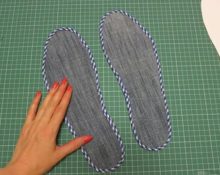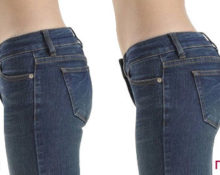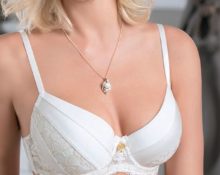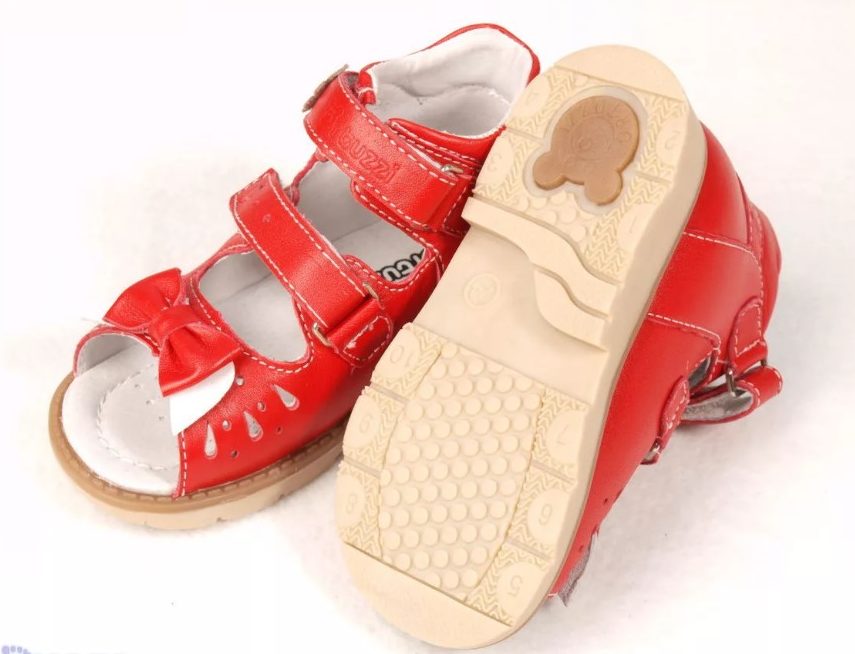 Almost everyone runs the risk of becoming an orthopedic patient. Some people are forced to spend a lot of time on their feet, others wear beautiful but uncomfortable high-heeled pumps. Particular attention is paid to children who are just learning to walk correctly, and whose legs are still growing and forming. Possible troubles can be prevented by specially manufactured orthopedic products.
Almost everyone runs the risk of becoming an orthopedic patient. Some people are forced to spend a lot of time on their feet, others wear beautiful but uncomfortable high-heeled pumps. Particular attention is paid to children who are just learning to walk correctly, and whose legs are still growing and forming. Possible troubles can be prevented by specially manufactured orthopedic products.
What is the difference between orthopedic shoes and insoles?
Reference! Orthopedic shoes are an accessory that fully supports the foot and ensures its correct position. The insole is only a part of the shoe that corrects the position of the foot.
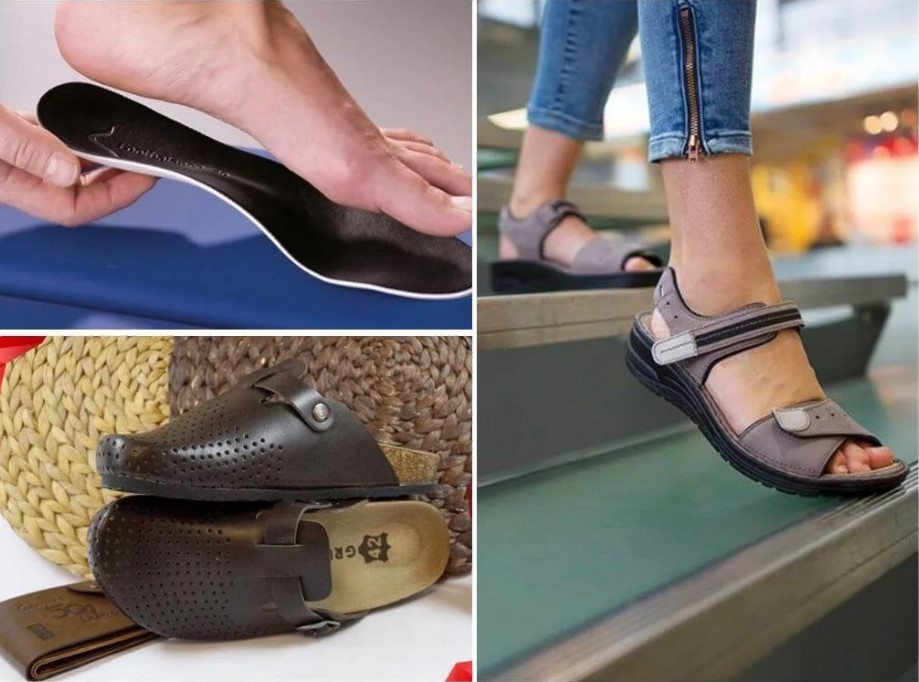
The features of the shoes are:
- a rigid heel that tightly secures the heel in the correct position;
- a wide toe that does not constrict the fingers and protects against mechanical external damage; caused by impacts;
- individually selected arch support, providing the necessary lift to the foot;
- low wide heel;
- an insole that supports the foot and is tightly secured to the flat base of the inside of the shoe.
Insoles, sold in specialized stores, are inserted into any shoes, boots or boots that a person wears in everyday life.
Important! It is better to select orthopedic products individually for each patient.
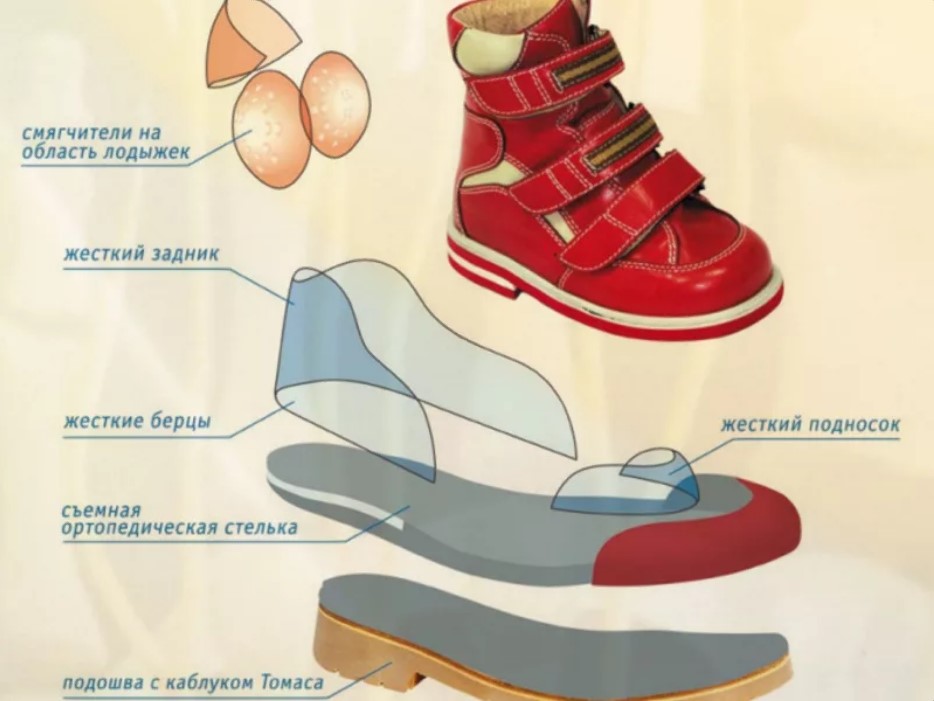
Buying insoles is less expensive compared to shoes, but the product is much more practical, because it can be used in several pairs.
In some situations, insoles, on the contrary, are inferior to orthopedic boots or shoes, because cannot provide complete reliable fixation of the foot in the correct physiological position. In addition, during wear, the liner may move or wrinkle without being glued to the sole. All this not only causes discomfort when walking, but can also negatively affect the prevention or treatment of the problem.
In the vast majority of cases, the doctor determines the need to use one or another instrument. For the prevention and correction of minor problems of the musculoskeletal system, an insole is prescribed. They are used:
- to prevent problems with flat feet or club feet in children under three years of age;
- to ease the load on the foot in pregnant women;
- as an aid with significant work of the foot: in professions where prolonged standing is expected, during prolonged walking, among athletes, etc.
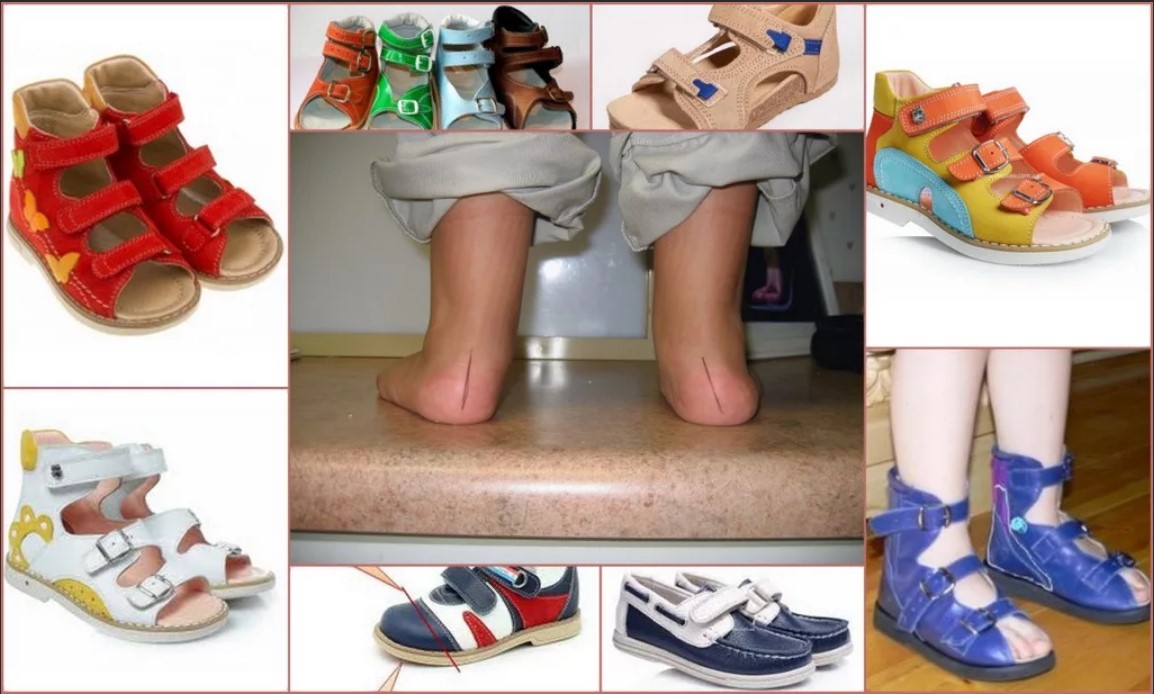
A prescription for making shoes is written out if more serious adjustments are needed. More often need it:
- disabled people;
- patients with diabetes mellitus diagnosed with diabetic foot;
- patients with significant problems in the development of the musculoskeletal system.
Orthopedic insoles, their advantages
In medical practice, specialized insoles are called orthoses. It is possible to manufacture inlays for both preventive and therapeutic purposes.
Preventing problems with joints and the musculoskeletal system in general most often involves wearing insoles made of foam materials, that is, softer ones.
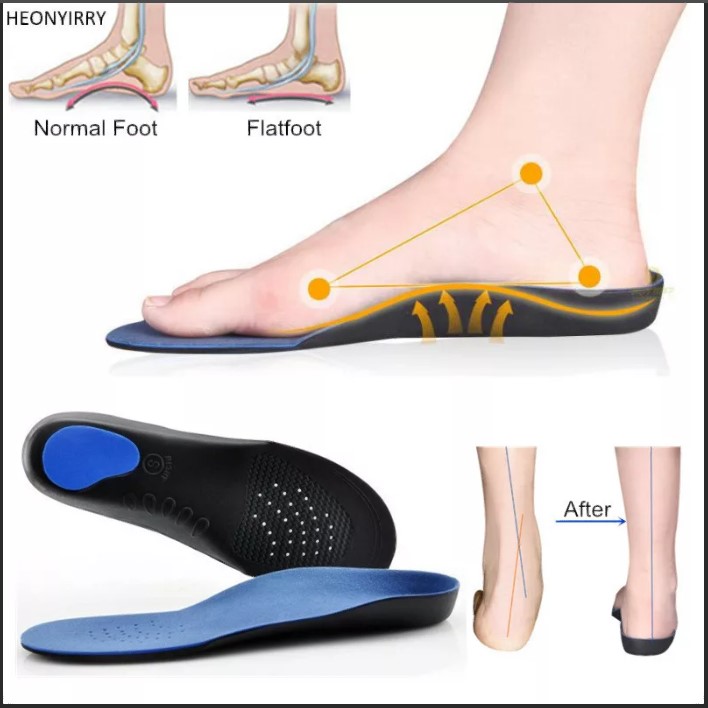
Such products help:
- improve blood circulation, preventing varicose veins;
- evenly distribute the load on the legs when standing or walking for a long time;
- reduce the likelihood of heaviness in the legs and swelling.
Therapeutic effectiveness is manifested in the formation of the position of the foot in childhood, while the little leg is still growing. Orthoses are prescribed for:
- treatment of simple forms of flat feet;
- with slight deformation of the fingers.
In which shoes can orthopedic insoles be used?
The effectiveness and benefits of orthoses are completely offset by incorrect use. Since the product is mobile and can be inserted into any regular shoes, it is worth knowing the basic rules for choosing it:
- Convenience and comfort should be felt initially at the fitting stage. The shoes do not squeeze the foot and do not rub the heel.
- Moderate toe space. The fingers are positioned freely, but without excessive space. The fullness of the foot is certainly taken into account when choosing a wardrobe item.
- A reliable heel secures the heel and does not allow the foot to “walk” inside the shoe or boot.
- Wide low heel. It is ideal if it is no lower than 2 cm and no higher than 4. Thin high stilettos are recommended to be left for short “outings”. For everyday wear, it is more useful to use comfortable, stable shoes.
- Natural and soft materials.Non-bending leatherette will not allow the skin to breathe and will hinder movement. It is better to invest in shoes made of genuine leather, suede or nubuck. Your feet will thank you for the investment.
- No to stiff soles. Wedges and clogs with a cork platform may look impressive, but they also limit the physiological movement of the foot.
- Another no to unstable sandals, clogs and flip-flops. All shoes with a weak heel or no heel at all may not be ideal for foot health. An unsupported foot is susceptible to dislocations and incorrect positioning when walking. Wearing flat-soled shoes can also cause problems.
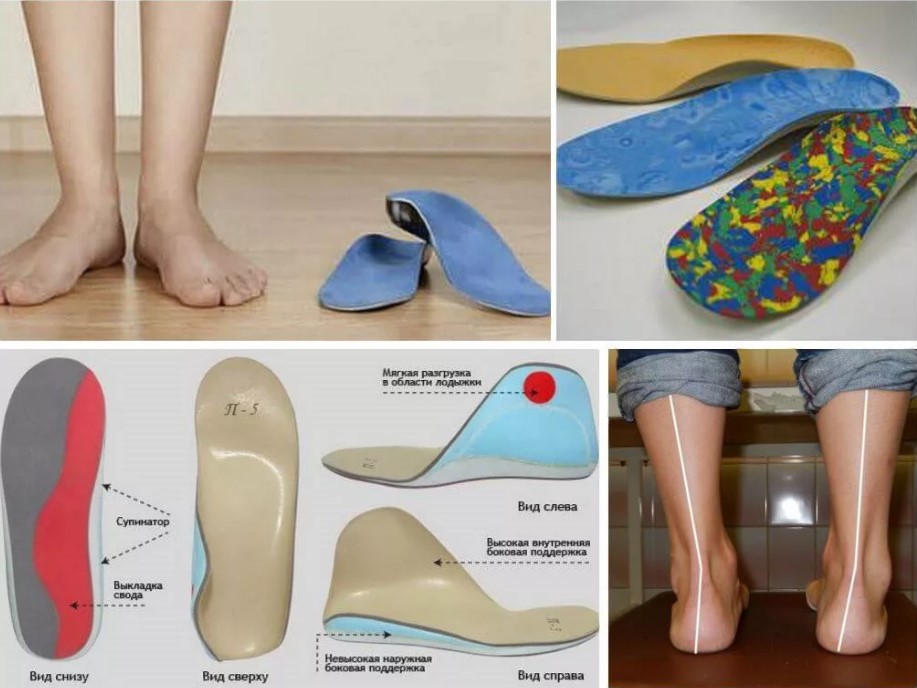
Important! When using orthopedic insoles, it is better to get rid of the factory insole, which does not always have a flat surface. To make the right choice, new shoes must be tried on with ready-made orthoses. Therefore, it is recommended to ask the seller to remove the original insole from the pair you are trying on.
Orthopedic shoes, their advantages
The main advantage of specialized shoes can be considered their individuality. Boots indeed effective for the prevention and treatment of musculoskeletal problems, are sewn to personal sizes, taking into account the characteristics of a particular client’s foot.
Almost always, such shoes are made from natural or porous materials, which allows the skin to “breathe” and prevent the occurrence of fungus or diaper rash.
Establishes the correct position of the foot, corrects deformities development and treats problems of the musculoskeletal system. It is necessary to purchase shoes taking into account the diagnosis and recommendations of the doctor.
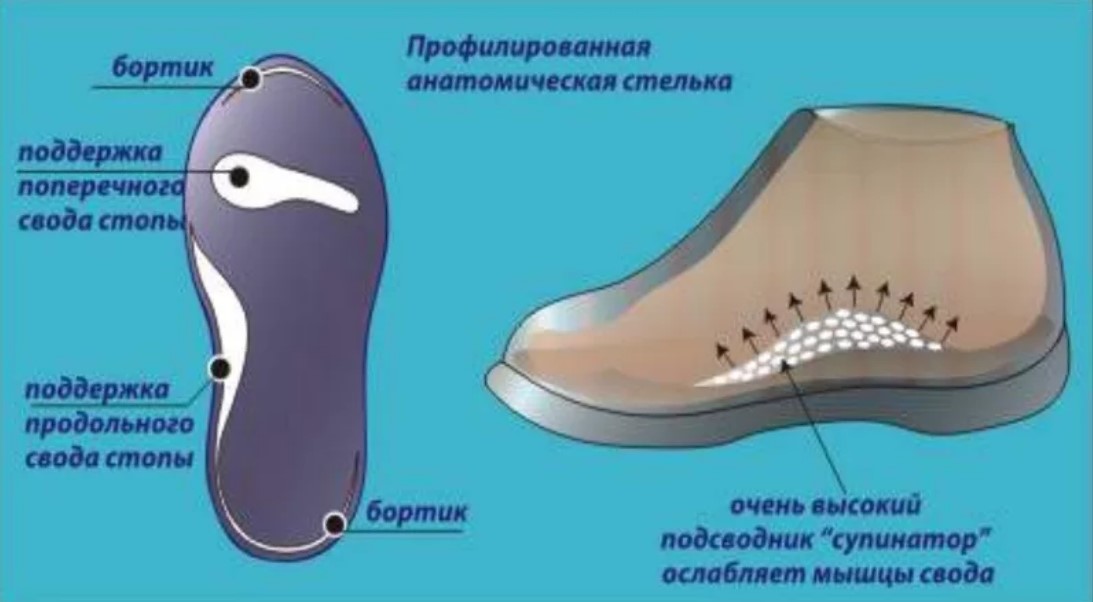
It has a positive effect on the hip joint, posture and forms a correct aesthetic gait in general.
What to choose: orthopedic shoes or insoles?
When choosing products it is necessary rely solely on the recommendations of an orthopedic specialist. It is the doctor who is able to choose the right tool to prevent possible problems or a recipe to get rid of existing diseases.
Important! Even in the absence of a hint of problems with the musculoskeletal system, one should not neglect the correct choice of shoes that have a positive effect on the health of its owner.
After all, many diseases begin due to fatigue or improper position of the foot during the day. And it is easier to prevent any problem than to get rid of its consequences in the future.


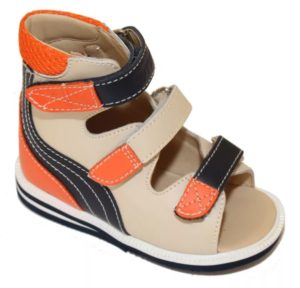
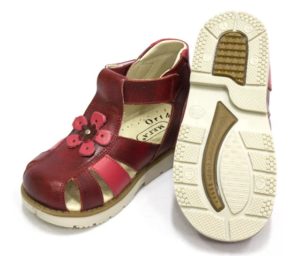
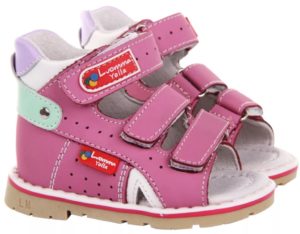
 1
1

